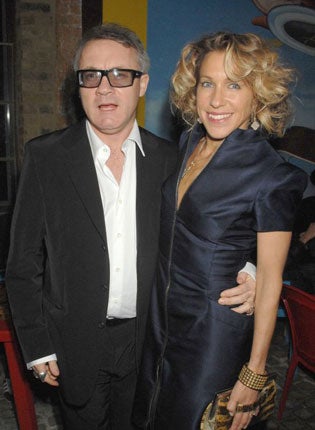The Damien Hirst diary that he didn't want turned into art
Lost journal found by artist's ex-flatmate pulled at last minute from London show

Your support helps us to tell the story
From reproductive rights to climate change to Big Tech, The Independent is on the ground when the story is developing. Whether it's investigating the financials of Elon Musk's pro-Trump PAC or producing our latest documentary, 'The A Word', which shines a light on the American women fighting for reproductive rights, we know how important it is to parse out the facts from the messaging.
At such a critical moment in US history, we need reporters on the ground. Your donation allows us to keep sending journalists to speak to both sides of the story.
The Independent is trusted by Americans across the entire political spectrum. And unlike many other quality news outlets, we choose not to lock Americans out of our reporting and analysis with paywalls. We believe quality journalism should be available to everyone, paid for by those who can afford it.
Your support makes all the difference.He shot to fame by taking unusual objects – notably dead animals such as horses and cows – encasing them in glass and displaying them in galleries as art. But when Damien Hirst discovered that his own diary, containing intimate declarations of love, was going to appear as an exhibit at an east London art show, he had no hesitation in contacting the police.
The artist, who has built a £230m fortune from works including his famous shark pickled in formaldehyde, was furious to learn that one of his former flatmates had found his personal diary, which he had misplaced almost 20 years ago and long since forgotten.
The entries include amorous remarks directed at Maia Norman, a glamorous Californian fashion designer that Hirst had just fallen for and who would later become his partner. "You are the most beautiful girl in the world," he wrote, "I love you so much."
The diary, along with an early Hirst sketchbook, was found by Dean Whatmuff, an artist contemporary, who used to house-sit for Hirst in the early 1990s. He had been moving house and opening crates when he found that some of the famous artist's belongings had accidentally become mixed up with his own.
Whatmuff planned to exhibit the diary and sketchbook under glass at the Plus Art Show in Bethnal Green at the weekend. The show runs beside the Frieze Art Fair, which attracts the world's wealthiest art buyers to London.
"I lived in Damien's place in Surrey Docks while he was off travelling the world and I used to water his tomatoes," Whatmuff said. "Eventually he left for good. I was unpacking some boxes from nearly 20 years ago and I found that Damien had left some belongings including a diary and a sketchbook. I thought I might as well show it at the Plus Art Show."
He added: "I was Damien's friend and I thought it was an interesting historic artefact. But when Damien found out about the exhibit he was pissed off about it." Whatmuff claimed Hirst had threatened to call the police if the diary was not returned.
With only a few hours to go before the Plus Art Show opened to the public, Hirst dispatched an associate to take back his property. The exhibit was promptly removed from its display and handed over.
Jude Tyrell, the director of Hirst's production company, Science, said: "The diary is now back with its rightful owner. Damien was not aware that Dean Whatmuff had this, or a sketch book, and was understandably concerned that they should be returned to him."
Hirst's relationship with Ms Norman, a California "surfer girl" who had once been his assistant, later blossomed. She became his long-term partner and they have three sons together. She now runs the Mother Of Pearl fashion label, and the family share a farmhouse in Devon.
The lost diary includes entries for dinner dates with colleagues including Jay Jopling, Hirst's dealer at the time, and organisational notes for his breakthrough shows in the early 1990s. The sketchbook contains ideas for works in progress at the time. It could easily have been sold for many thousands of pounds if included in the exhibition sale.
The lost diary ends in 1993, at a time when Hirst became notorious for his party lifestyle, prompting serious drug and drink problems. A calmer figure today, he is still able to challenge the art establishment with works such as For the Love of God, his diamond-encrusted platinum skull, which was sold for a reported £50m.
Hirst has also faced controversy over the sources of his own works. In 2000, he agreed to pay an undisclosed sum to head off legal action for breach of copyright by the designer of a toy which bore a resemblance to his bronze sculpture Hymn, which was bought by Charles Saatchi for £1m. He employs a team of assistants to help produce the works sold under his name.
A spokesman for Scotland Yard said police had not been required to intervene to secure the return of Hirst's property. Sources indicated that the artist was happy to let the matter lie and would not take further action against Whatmuff, who once exhibited his work beside Hirst but never enjoyed the same commercial success.
A colleague said: "Damien thought it was bizarre that he might need Scotland Yard to get back diaries that had been lost long ago, but he could not have allowed his personal property to be displayed or perhaps even sold."
Join our commenting forum
Join thought-provoking conversations, follow other Independent readers and see their replies
Comments